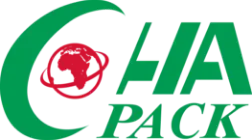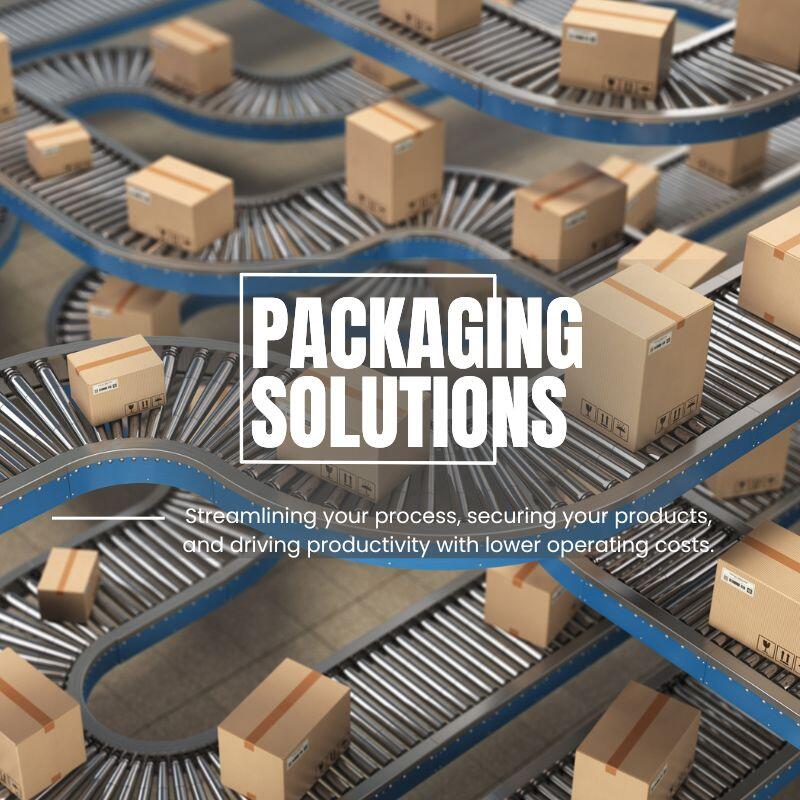How to Choose the Right Packaging Machine
- Home
- Solutions
- By Application
- How to Choose the Right Packaging Machine
How to Choose the Right Packaging Machine
Packaging machines are the backbone of modern production. These equipment ensure your product is protected, fresh, visually appealing, and delivered efficiently.
For any business owner, a strong packaging strategy powered by the right machinery is fundamental to staying competitive in this market.
Why is Selecting the Right Packaging Machine Important?
A packaging machine impacts far more than just how your products are packaged. The right equipment significantly boosts production efficiency, allowing for higher output and faster market delivery.
It also ensures your products are protected from damage and contamination during transit. Beyond protection, a strategically chosen packaging machine can reduce operational costs by minimizing material waste and labor needs.
If your business handles diverse products or plans to scale operations, a sound machine is a long-term investment, as it can easily adapt to new products or increased demand.
Moreover, many industries have strict packaging regulations. The correct machine helps you meet these standards and avoid costly fines or legal issues.
Key Factors to Consider When Purchasing a Packaging Machine
To choose the perfect packaging machine solution, you'll need to consider these 7 factors:
1. Product Type and Packaging Requirements
While the basics like shape, size, and fragility of your product are always top of mind, don’t overlook these points:
- Product Packaging Consistency and Precision Requirements
The level of precision your packaging needs differs across industries. For instance, medical products demand high precision to maintain sterility. But for dry goods, like grains, the primary goal is speed and protection from moisture.
- Product Changeover Frequency
If you have a diverse range of products, pick a packaging machine that can adapt to different shapes and sizes. A machine with quick changeover capabilities will reduce downtime and maintain production flow.
- Future Product Line Expandability
Consider whether your packaging solution can accommodate your future product lines. A modular system can minimize future costs, as you can upgrade or reconfigure the machine instead of replacing it.
2. Choosing the Right Packaging Materials
The material you choose impacts your production process, product integrity, and supply chain. Besides material costs, you also need to think about:
- Equipment and Material Compatibility
Biodegradable films or recycled materials often have properties that demand specific machine capabilities or adjustments. Make sure your materials and machine work together.
- Material Supply Stability and Cost Control
Work with suppliers with a proven track record of consistent delivery and quality and keep an eye on the cost trends of your packaging materials.
- Packaging Material Storage and Management
Different packaging materials have specific requirements for warehouse storage and conditions. For example, large film rolls take up substantial warehouse space, while specially coated materials may require a controlled environment.
An inventory management system can help you track material usage, minimize waste, and maintain ideal stock levels.
3. Production Speed and Efficiency
Simply looking at the speed isn't enough — dig deeper into these aspects:
- Actual Stable Equipment Speed vs. Stated Speed
Test the equipment's actual output speed during continuous operation to ensure it meets your needs. You must factor in material changes, minor adjustments, and operating conditions.
- Impact of Equipment Downtime or Failure Rate on Overall Efficiency
Choose equipment with high reliability and a low failure rate to avoid unexpected shutdowns. It's better to have a machine that runs consistently, even if it’s not the fastest, because you’ll get more done at a lower cost in the long run.
- Production Efficiency Monitoring and Reporting Functions
Machines with monitoring and reporting features can track metrics like output per hour, downtime events, material consumption, and overall equipment effectiveness (OEE).
4. Automation Level and Staffing Needs
The level of automation depends on your production scale, budget, and long-term goals:
- Automation Selection
For large operations looking to optimize their production line, fully automated solutions from manufacturers like CHUEN AN PACK offer maximum efficiency and consistency.
Semi-automatic systems, which involve some human assistance, suit medium-sized operations. Manually assisted systems work best for smaller businesses or those handling specialized products.
- Operability and User-Friendliness:
Look for machines with user-friendly control panels, clear instructions, and basic troubleshooting so staff can handle minor issues without tech support.
- Long-term Benefit Analysis of Automation and Labor Costs
While automated machines have a higher upfront cost, they save more in the big picture. Conduct a detailed ROI analysis to compare the initial investment against projected savings and revenue.
- Human Intervention in Emergency or special requests
Packaging equipment should have manual control functions to handle emergencies or special requirements, like clearing jams or running specialized batches.
5. Available Space and Workflow Integration
Do you have enough warehouse space? And how does the new equipment fit into your existing workflow?
- Production Line Layout and Space Planning
Your new packaging solution must seamlessly integrate with your current production line to ensure a smooth workflow. Consider space layout, equipment interfaces, and the level of automation needed.
- Space Required for Equipment Maintenance
Remember to allocate additional space for maintenance, servicing, and spare parts replacement. Cramped spaces make routine maintenance difficult.
- Equipment Entry and Installation Path
Before a machine even starts running, it has to get into your facility. Confirm your facility’s aisle width and the location of the power and compressed air supply.
- Flexibility for Future Machine Expansion or Adjustment
Your business will evolve, and so will your production needs. Go for modular machines for more flexibility with expansion and reconfiguration.
6. Industry Regulations and Compliance
Ensuring your packaging machine complies with legal standards is non-negotiable:
- Compliance with International Certification Standards
For businesses going global, international certifications such as CE, FDA, or UL, help you enter international markets.
Many industries have their own rules, too. For example, the food industry must comply with HACCP and GMP standards to ensure cleanliness and hygiene.
- Equipment Safety and Risk Management Mechanisms
Look for machines with proper guarding, emergency stops, safety interlocks, and clear operating procedures to protect your workforce. In regulated sectors like the medical industry, adherence to ISO 13485 standards is a must.
- Ability to Adapt to Future Regulatory Adjustments
Since regulations can change, choose flexible packaging machinery. Machines designed for software updates, hardware adjustments, or modular additions help you avoid future costs.
7. Maintenance and After-Sales Support
Good maintenance and after-sales support make a big difference in operations:
- Supplier's After-Sales Service Capability and Response Time
Make sure your supplier has a good reputation, technical strength, and rapid response time. Timely technical support ensures your equipment stays in top shape and minimizes downtimes or disruptions.
- Stability and Ease of Access to Parts Supply
Equipment parts should be easy to replace and have a stable supply, so you won’t have to wait for weeks and delay production.
- After-Sales Service and Maintenance Support
Does the supplier provide remote diagnostics, on-site repairs, or scheduled maintenance visits? How quickly can a technician respond or arrive if there's a problem?
Understanding what comes with your supplier’s support package is crucial for the lifespan of machines.
- Price and Warranty
While pricing is an initial consideration, pay attention to the warranty period and maintenance costs. High-quality equipment and good maintenance support can save more costs down the line.
FAQs
Q1: How do I choose the right level of automation for a packaging machine?
Answer: Match your automation level (full, semi, or manual) to your company's production scale, budget, and product requirements.
Fully automatic systems are perfect for large-scale production because they handle the entire packaging process automatically. Semi-automatic options, however, require some human assistance and are best suited for medium to small-scale operations.
Q2: How can I confirm the actual production speed of a packaging machine matches the stated speed?
Answer: Request actual product testing videos or conduct on-site tests with your specific materials to verify the machine's real, stable output.
Q3: How do I know if a packaging machine is compatible with specific packaging materials?
Answer: Before purchasing, have the supplier test the machine using your exact packaging materials to ensure compatibility and smooth operation.
Your Complete Packaging Solution: CHUEN AN PACK
Packaging machines directly affect production efficiency, product quality, and your bottom line.
That’s why choosing packaging solutions from a reputable and compliant partner, like CHUEN AN PACK, is the best decision you can make for your business. We offer a wide range of packaging machine solutions, expert guidance, and after-sales support to ensure smooth operations and long-term success.
Explore our diverse solutions and contact us today for more inquiries.


